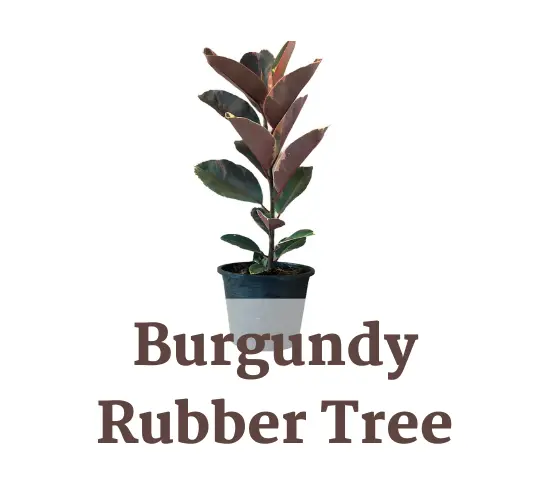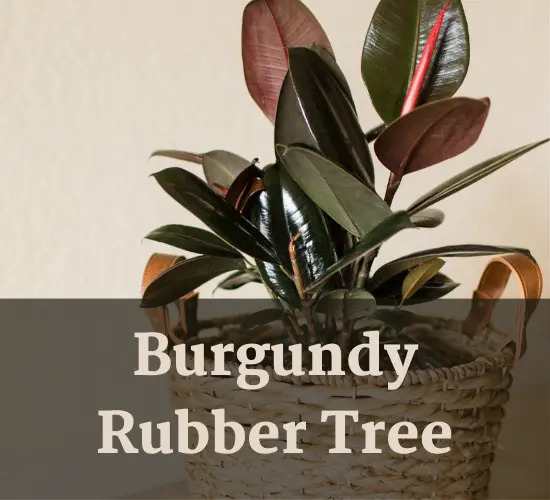Table of Contents
Burgundy Rubber Tree Yellow Leaves: Tips and Tricks
Burgundy Rubber Trees(Ficus Elastica Burgundy) are a popular houseplant due to their striking foliage and low-maintenance care. However, even the most attentive plant parents may encounter yellowing leaves on their Rubber Tree. There are several theories about the causes of yellowing leaves on Burgundy Rubber Trees, ranging from improper soil moisture to low humidity.
In this article, we will investigate the truth behind these theories and provide tips on how to prevent and treat yellowing leaves to save your beloved plant.

As plant parents, we understand the importance of keeping our Rubber Trees healthy. Not only do healthy plants add beauty and life to our homes, but they also offer numerous benefits to our overall well-being. However, maintaining a healthy plant can be challenging, especially when faced with yellowing leaves.
In this article, we will delve into the common causes of yellowing leaves on Burgundy Rubber Trees and provide practical solutions to prevent and treat this issue, allowing you to enjoy a thriving plant and the benefits it provides. So, let’s explore the world of Burgundy Rubber Trees and learn how to save your plant from yellowing leaves.
Key Takeaways
- Proper soil moisture is crucial for preventing yellowing leaves on Burgundy Rubber Trees
- Maintaining humidity and avoiding overwatering are important prevention measures
- Insect infestations can also cause yellowing, so keeping the plant healthy is key
Causes of Yellowing Leaves

The yellowing of leaves on Burgundy Rubber Trees can be caused by several factors, including improper soil moisture, low humidity, and stress. Overwatering or alternating between bone-dry and wet soil can lead to yellowing leaves. It is important to water the plant only when the top 2-3 inches of soil are dry, and the soil should remain damp but not wet. Excess water in the saucer should be discarded to prevent root rot.
Misting the leaves often can increase humidity, which can also help prevent yellowing. In addition to improper soil moisture and low humidity, a weakened or stressed Rubber Tree is more susceptible to insect infestations. Sap-sucking bugs like spider mites can cause yellowing. Identifying pests early on and treating them promptly can prevent further damage to the plant.
It is also important to note that the yellowing of leaves is natural if there is new growth on the plant and the yellowing leaves are older. Natural leaf shedding is a normal part of the plant’s growth cycle.
Prevention and Care
To maintain the health of a Burgundy Rubber Tree, proper soil moisture and humidity levels must be consistently maintained. Watering frequency is a crucial aspect of caring for this plant, as overwatering or underwatering can lead to yellowing leaves. It is best to water the plant only when the top 2-3 inches of soil are dry, ensuring that the soil remains damp but not wet. Excess water in the saucer should be promptly discarded to prevent root rot.
It is also advisable to mist the leaves often to increase humidity and prevent them from drying out.
In addition to proper watering, maintaining adequate humidity levels is essential for the health of a Burgundy Rubber Tree. The ideal humidity level for this plant is between 40-60%. If the air in the room is too dry, the leaves may begin to yellow and drop. To increase humidity levels, a humidifier can be used. Alternatively, placing a tray of water near the plant or grouping it with other plants can also help to maintain a more humid environment.
Taking care of these simple aspects of plant care can go a long way in keeping a Burgundy Rubber Tree healthy and thriving.
Frequently Asked Questions
Can a Burgundy Rubber Tree survive in low light conditions?
Burgundy Rubber Trees can survive in low light conditions, but growth may be stunted and foliage may lose color. Troubleshooting tips include providing bright indirect sunlight and avoiding overwatering.
What is the best temperature range for a Burgundy Rubber Tree?
The ideal temperature range for a Burgundy Rubber Tree is between 60-75°F, and winter care should include keeping the plant away from drafts and providing sufficient humidity.
How often should a Burgundy Rubber Tree be fertilized?
Burgundy Rubber Trees can be fertilized every 2-4 weeks during the growing season with either organic or synthetic fertilizers. Signs of over-fertilization to watch for include burnt leaf tips, stunted growth, and yellowing leaves. Organic fertilizers have benefits such as improving soil quality and reducing environmental damage.
Can pruning help prevent yellowing leaves on a Burgundy Rubber Tree?
Pruning benefits a Burgundy Rubber Tree by promoting new growth and removing yellowed or damaged leaves. Common mistakes include over-pruning or removing too much foliage at once, which can stress the plant.
How do you propagate a Burgundy Rubber Tree?
Burgundy rubber tree propagation involves taking stem cuttings with at least two leaves, dipping them in rooting hormone, and planting them in a well-draining soil mix. Care for burgundy rubber trees in winter includes reducing watering frequency and providing adequate light.
Conclusion
Yellowing leaves on a Burgundy Rubber Tree can be a sign of various issues, including overwatering, underwatering, low humidity, or pests. It is essential to identify the underlying cause of the problem before attempting to treat it.
Proper care and prevention can help your Rubber Tree thrive and maintain its striking foliage. To prevent yellowing leaves, it is crucial to maintain a consistent watering schedule, ensuring the soil is moist but not waterlogged. Additionally, providing your plant with adequate humidity and avoiding extreme temperature fluctuations can help prevent leaf discoloration. Regularly inspecting your plant for signs of pests and promptly addressing any infestations is also essential for maintaining its health.
In conclusion, taking care of your Burgundy Rubber Tree requires attention to detail and consistent care. Just like tending to a garden, it takes patience, effort, and knowledge to maintain your plant’s health. By following the tips outlined in this article, you can prevent yellowing leaves and keep your Rubber Tree thriving. Remember, investing in proper care and prevention can save you time, money, and heartache in the long run.